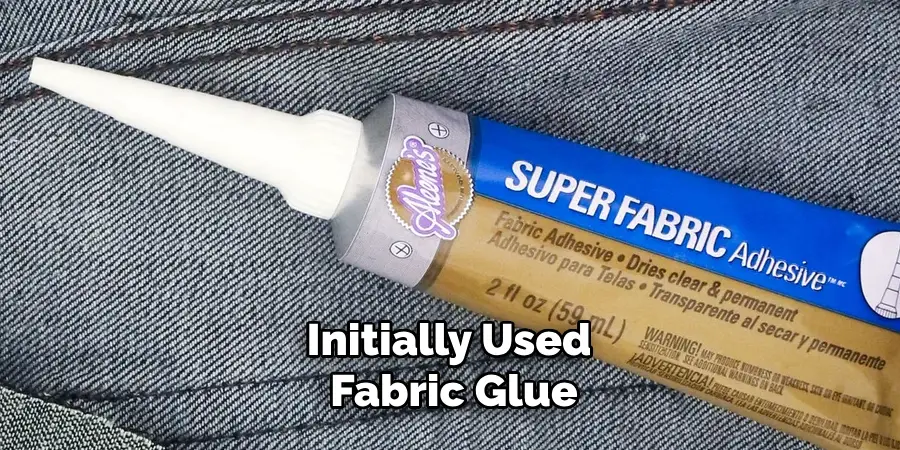Putting patches on a leather jacket is a stylish way to personalize and breathe new life into a cherished garment. Whether you’re adding patches for fashion, sentimental value, or to cover up wear and tear, knowing how to properly apply them ensures a seamless and durable result.

This guide will walk you through the steps of how to put patches on leather jacket, covering essential techniques such as selecting the right patches and jacket placement, preparing the jacket surface, and choosing the best method for attachment.
From sewing to using adhesive or iron-on patches, each method offers unique benefits and considerations to maintain the integrity of the leather. By following these instructions, you can transform your leather jacket into a unique expression of style and personality while preserving its quality and ensuring the patches stay securely in place for years to come.
Importance of Adding Patches to a Leather Jacket
Adding patches to a leather jacket goes beyond mere aesthetics; it serves multiple important functions that enhance the value and longevity of your garment.
Firstly, patches can be a powerful means of self-expression, allowing you to showcase your interests, affiliations, and personal style. They turn a standard leather jacket into a canvas for your unique identity, making it truly one-of-a-kind.
Secondly, patches can be used to repair and cover up minor imperfections, such as tears, stains, or areas of wear, extending the life of a well-loved jacket. This sustainable approach not only saves you money but also reduces waste, contributing to more environmentally friendly fashion choices.
Additionally, patches can increase the jacket’s sentimental value by commemorating special events, travels, or achievements. Whether for practical or expressive reasons, adding patches infuses your leather jacket with character and makes it a timeless piece you’ll cherish for years.
Choosing the Right Patches
Selecting the right patches for your leather jacket is an integral part of the customization process. The first factor to consider is the material of the patches. Leather patches are often a popular choice as they blend seamlessly with the jacket and ensure durability.

Fabric patches, while versatile and widely available, require careful consideration regarding their adhesion to the leather surface. Next, consider the design and color scheme. Patches that complement the color and overall aesthetic of your jacket will create a cohesive look.
Conversely, bold and contrasting patches can make a striking statement, allowing your jacket to stand out. Pay attention to the size and shape of the patches; larger patches can serve as focal points, while smaller patches are perfect for adding subtle details.
10 Methods How to Put Patches on Leather Jacket
1. Gather Materials and Select Patches
Start by gathering all necessary materials in a well-lit and clean workspace. You will need your leather jacket, patches of your choice (ensure they complement the jacket’s style and color), fabric glue or sewing supplies (needle and thread), sharp scissors, a measuring tape, and optionally, a small brush or cotton swab for applying glue.
2. Plan Patch Placement
Lay your leather jacket flat on a clean, smooth surface and begin planning where each patch will go. Take into account the size and shape of each patch, as well as the overall aesthetic you wish to achieve. Experiment with different arrangements by placing patches in various positions until you find a layout that enhances the jacket’s design.
Consider symmetry, spacing between patches, and how they interact with seams, pockets, and other features of the jacket. This planning phase ensures that once attached, the patches will not only look cohesive but also complement the jacket’s natural contours and style.
3. Clean and Prepare the Jacket
Before attaching any patches, thoroughly clean and prepare the area of the leather jacket where each patch will be placed. Use a leather cleaner or a mild soap diluted in water to remove any dirt, oils, or residues that could interfere with adhesion. Gently blot the cleaned areas with a clean cloth and allow them to air dry completely.

Proper cleaning not only ensures better adhesion but also prevents contaminants from affecting the leather’s surface and the patch’s backing, whether you choose to sew or use fabric glue.
4. Option 1: Sewing Method
For a secure and traditional attachment method, opt for sewing the patches onto your leather jacket. Thread a needle with strong, durable thread that matches the color of your patch and jacket. Knot the end of the thread and start sewing from the inside of the jacket to conceal the knot.
Position the patch on the jacket and begin stitching along the edges of the patch, using small, even stitches. Ensure each stitch goes through both the patch’s backing and the leather jacket’s material without pulling too tightly, which could distort the jacket’s shape or weaken the stitches.
Continue stitching around the entire perimeter of the patch, periodically checking the tension to maintain consistent stitching. Knot the thread securely on the inside of the jacket once you have completed sewing around the patch. This method not only securely attaches the patch but also adds a handmade touch to your jacket’s customization.
5. Option 2: Fabric Glue Method
If you prefer a simpler and less intrusive attachment method, use fabric glue suitable for leather. Choose a high-quality fabric glue that provides strong adhesion without damaging the leather’s surface or the patch’s backing material.
Apply a thin, even layer of fabric glue to the back of the patch using a small brush or cotton swab. Ensure the glue covers the entire surface area that will come into contact with the jacket. Carefully position the patch on the cleaned and dry area of the jacket, pressing it firmly into place.
Hold the patch in position for a few moments to allow the glue to begin bonding. Follow the manufacturer’s instructions regarding drying time and any additional steps to ensure a strong, permanent bond. Fabric glue offers a convenient method for attaching patches without the need for sewing skills or tools, making it ideal for beginners or those who prefer a quick customization option.
6. Reinforce with Stitching (Optional)
To enhance the durability and visual appeal of the patches, consider reinforcing the edges with additional stitching, even if you initially used fabric glue. Thread a needle with matching thread and carefully sew along the perimeter of the patch, using small, tight stitches.

This additional stitching not only secures the patch more firmly to the jacket but also creates a decorative border that complements the patch’s design. Choose a stitching pattern that complements the style of your jacket and adds a personalized touch to your customizations.
7. Allow Proper Drying or Setting Time
Whether you opt for sewing or fabric glue, allow sufficient time for the patches to fully adhere to the leather jacket. Avoid handling or wearing the jacket excessively during this time to prevent the patches from shifting or becoming misaligned. Follow the recommended drying or setting time provided with your chosen attachment method to ensure a strong, long-lasting bond.
8. Trim Excess Threads and Clean Up
Once the patches are securely attached and any additional stitching is complete, carefully trim any excess threads using sharp scissors. Take care not to cut into the leather or the edges of the patches. Clean up any residual glue using a damp cloth or cotton swab, ensuring to gently wipe away any excess glue that may have seeped out during attachment.
Maintaining a clean and tidy appearance around the patches enhances the overall look of your customized leather jacket and ensures the patches remain securely in place over time.
9. Test and Assess
After allowing the patches to fully set and dry, gently test their adhesion by lightly tugging on the edges. Ensure each patch is securely attached to the leather jacket and does not peel away or lift at the edges. Assess the overall appearance and alignment of the patches, making any necessary adjustments to ensure they are positioned exactly as desired.
Testing the patches’ durability and alignment ensures they will withstand regular wear and maintain their visual appeal, enhancing the longevity of your customized leather jacket.
10. Maintain and Care for Your Jacket
To preserve the quality and appearance of your leather jacket and the patches attached to it, follow proper care and maintenance practices. Regularly clean and condition the leather using products specifically formulated for leather garments. This helps prevent drying, cracking, or fading of both the leather and the patches over time.
Avoid exposing the jacket to excessive moisture, direct sunlight, or extreme temperatures, as these factors can damage the leather and affect the adhesive properties of the patches.

Inspect the patches periodically for signs of wear or loosening, and reattach or reinforce them as needed to maintain their integrity and appearance
Conclusion
Customizing your leather jacket with patches can be a rewarding and creative process, allowing you to express your unique style and personality.
By choosing high-quality patches and following proper attachment methods, either through sewing or using fabric glue, you can ensure a secure and lasting application.
Remember to reinforce edges with additional stitching if desired and to allow adequate drying or setting time to achieve the best results.
Thanks for reading, and we hope this has given you some inspiration on how to put patches on leather jacket!

